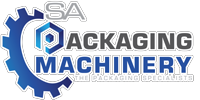Introduction
Automatic capsule filling machines play a crucial role in pharmaceutical manufacturing, enabling the efficient and precise filling of capsules with powders, pellets, or granules. Much like a pastry chef efficiently piping icing onto a tray of cupcakes, these machines streamline the process by orienting, opening, filling, and sealing capsules at high speeds, often producing thousands per minute.
Understanding Automatic Capsule Filling Machines
Think of automatic capsule fillers as high-tech production lines dedicated to medicine encapsulation. Similar to how an automated assembly line in a factory performs repetitive tasks with precision, these machines handle every step of the process—sorting empty capsules, accurately dispensing the correct dosage, and sealing them securely. This automation is essential for large-scale pharmaceutical production.
How Do They Operate?
The capsule filling process begins with aligning and separating the empty capsules, much like organizing playing cards to face the same direction. A vacuum system then separates the capsule bodies from the caps, ensuring they are ready for filling.
Once the capsules are open, the machine dispenses the necessary substance—whether powder, granules, or pellets—into each one. This step can be compared to measuring out baking ingredients to ensure consistency. Advanced tamping mechanisms pack the material evenly, preventing spillage and ensuring uniform dosage.
After filling, the caps are securely reattached to the bodies, similar to sealing a jar to preserve its contents. The completed capsules are then expelled from the machine, ready for the next phase of packaging and distribution.
Key Features
These machines come equipped with intuitive touchscreen controls, easy-to-clean components, and built-in sensors that monitor the process, alerting operators to any issues. Just as a car dashboard displays warning indicators, these sensors help maintain smooth operation, reducing downtime and enhancing efficiency.
Advantages of Automatic Capsule Filling Machines
1. High Efficiency
With the ability to fill hundreds or even thousands of capsules per minute, these machines significantly enhance production rates, ensuring pharmaceutical companies can meet demand without sacrificing quality.
2. Unmatched Precision
Every capsule is filled with an exact dosage, thanks to advanced tamping and measuring systems that eliminate variability and human error.
3. Safety & Hygiene
Designed with stringent pharmaceutical standards in mind, these machines include easy-to-clean parts and contamination-prevention mechanisms, ensuring product safety and regulatory compliance.
4. Cost Savings Over Time
Although the initial investment in an automatic capsule filler is substantial, its ability to reduce labor costs and improve efficiency makes it a worthwhile investment in the long run.
Expert Recommendations
Selecting the Right Machine
Choosing the most suitable automatic capsule filler depends on production volume, capsule size requirements, and material properties. Machines with sophisticated tamping and real-time monitoring systems are ideal for delicate substances and precise dosing needs.
Maintenance Best Practices
To maximize efficiency and longevity, regular maintenance is essential. Cleaning the machine after each use, conducting routine component checks, and following a scheduled maintenance plan can prevent unexpected breakdowns and ensure continuous operation.
Industry Trends
Automation and smart technologies are shaping the future of capsule filling. IoT-integrated systems and real-time monitoring advancements are improving efficiency by enabling predictive maintenance and automated adjustments to maintain optimal performance.
Conclusion
Automatic capsule filling machines are indispensable in modern pharmaceutical production. By streamlining the encapsulation process, they enhance efficiency, accuracy, and safety, ultimately ensuring that every capsule delivers the correct dosage reliably. As technology advances, these machines will continue to evolve, offering even greater precision and automation to meet the growing demands of the industry.
